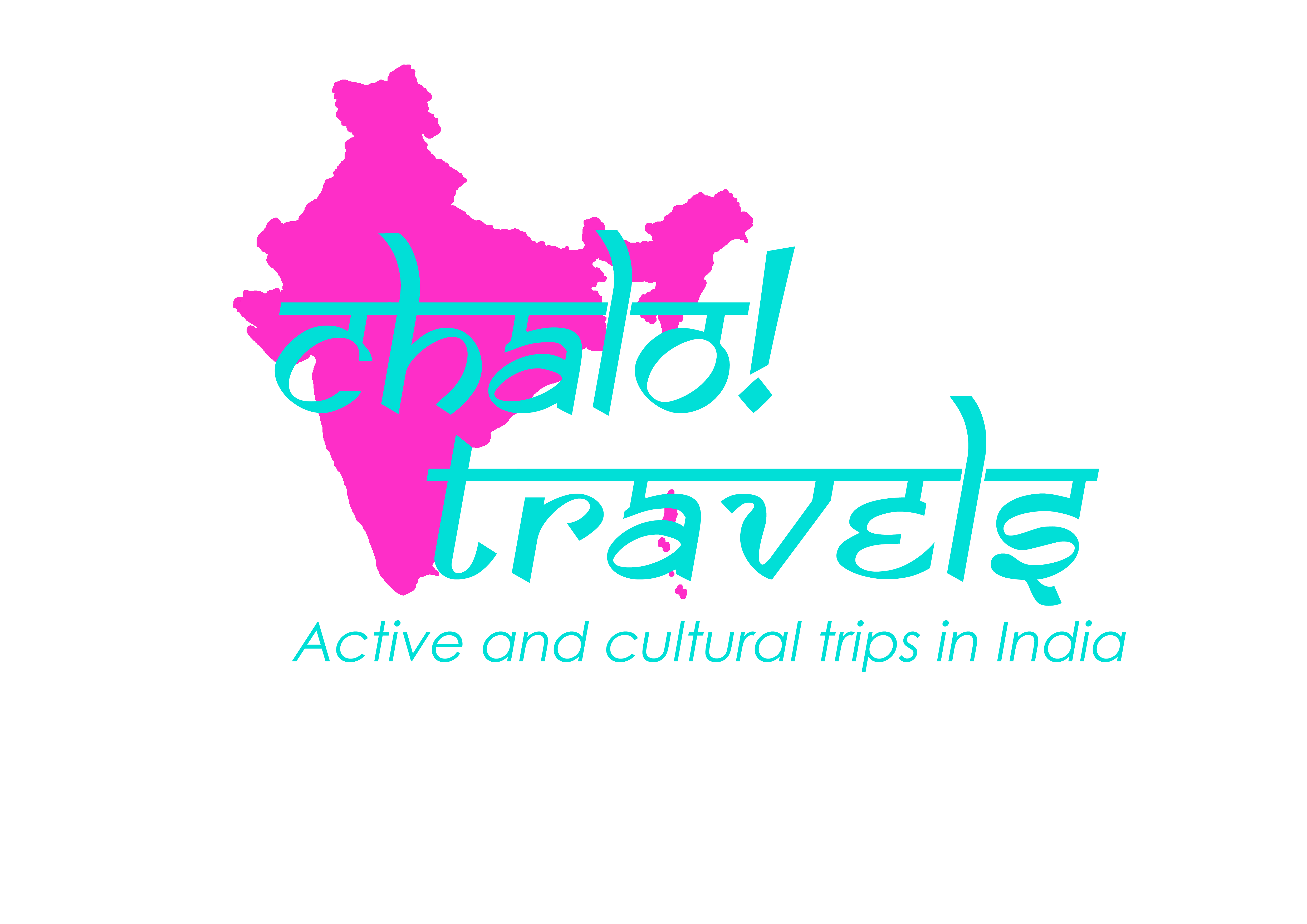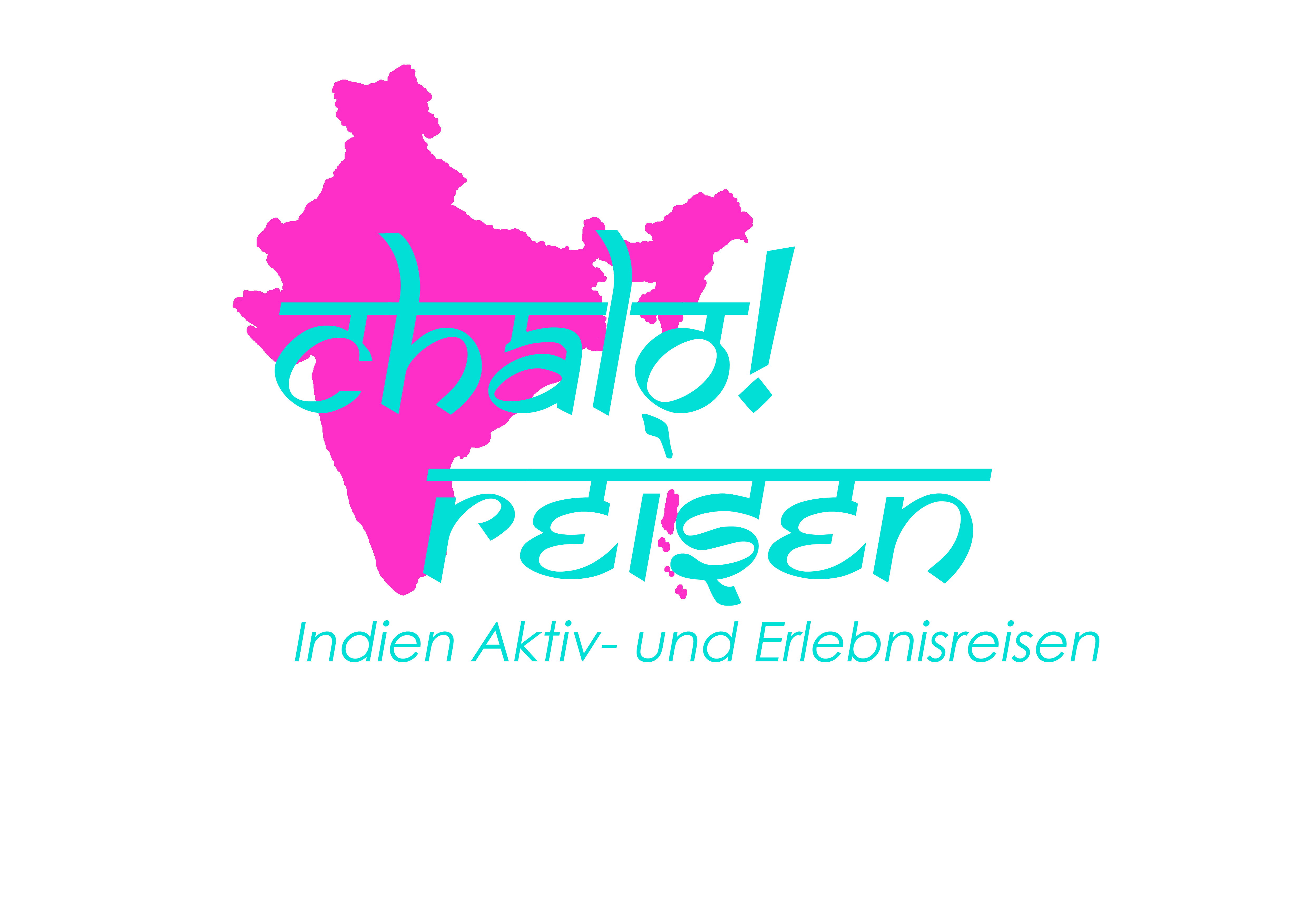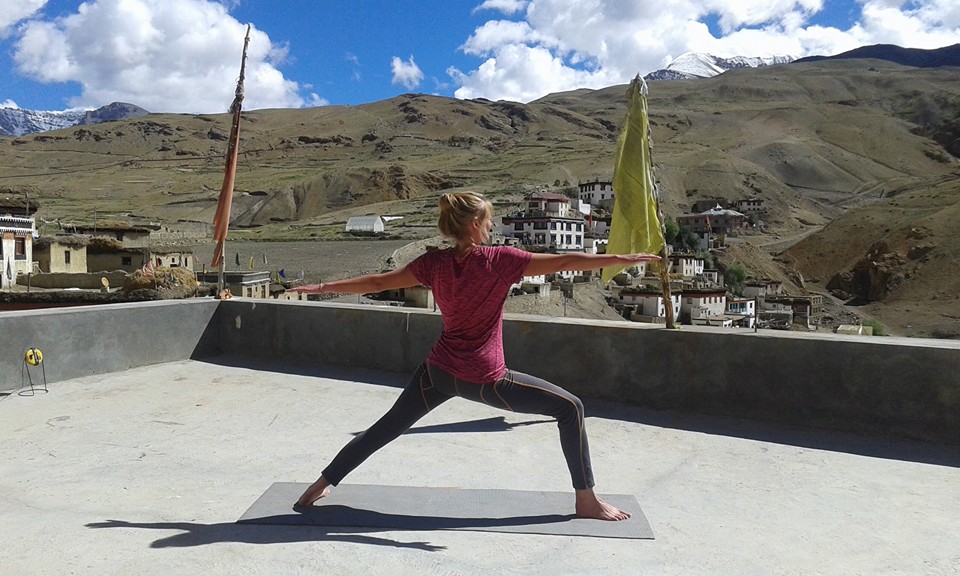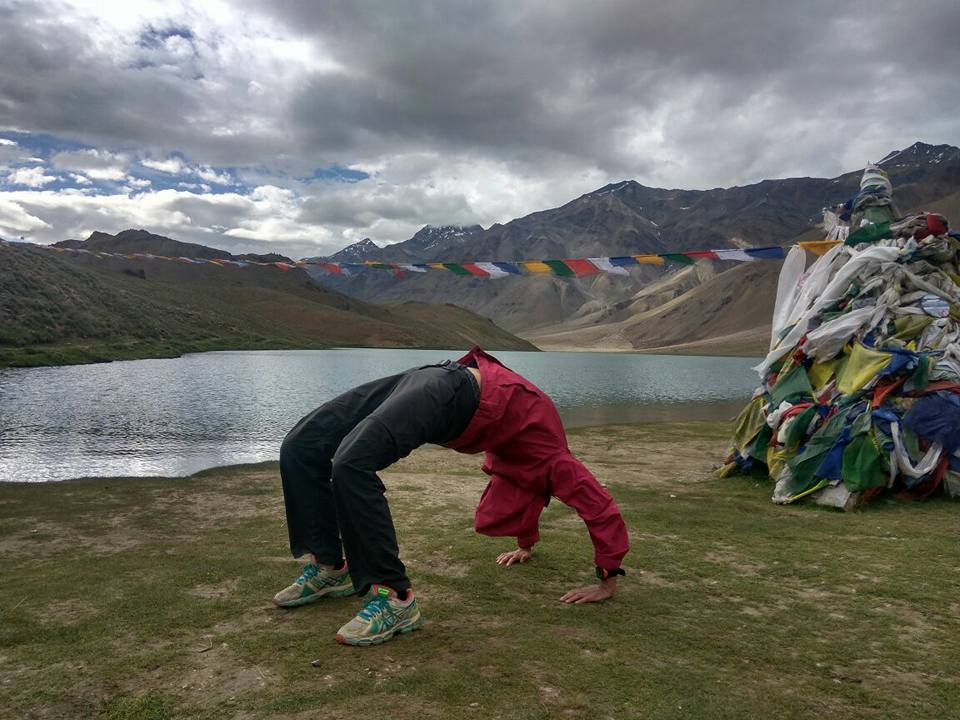- Sport & Abenteuer Reisen
- Aktive Kultur Reisen
- Yoga & Ayurveda Reisen
- Multi Aktiv Reisen
- Kultur Reisen
- Yoga Reisen
- Trekking Reisen
Overview
The Spiti Valley is a fairy-tale country: mountain slopes in all kinds of colours, eroded mountains, raging rivers, small villages surrounded by green pea and barley fields, deep gorges… all this is part of the surreal landscape. Spiti is strongly Buddhist and has about 30 monasteries- most of them hunddreds of years old. During the long winter season, the valley is shrouded in snow and cold.
Spiti is located in the rain shadow and is therefore perfect for visiting during the monsoon season.
When you trek through the high cold mountain desert, you get a great insight into the rich culture and life of the Spiti inhabitants and may be lucky enough to spot some rare animals. (snow leopard, blue sheep, Tibetan wolf).
Kinnaur is adjacent to Tibet and is located in the northeastern corner of Himachal Pradesh. The beautiful district has only recently been opened to visitors. There are secluded green valleys, orchards and remote villages.
The moderate four-day trek over the 4950-metre-high Bhaba Pass is one of the most beautiful treks in the region. It leads us from the green Kinnour valley into the dry high mountain desert of Spiti.
In the past, the trek served as a popular trade route and still today many locals and especially shepherds use it.
During this tour we will have daily yoga classes in some of the most energetic places and in the powerful Himalayan environment. We will delve deep into Buddhist yoga and meditation practice and meet with the Buddhist monks in the morning during their ceremonies and meditation.
This trip is accompanied by Sarah (German) or Noor (English).
Program
Day 1 Departure from abroad and arrival in Delhi, India
Transfer from the airport to our hotel (overnight stay at the hotel).
Day 2 Visit to Temple and Ngo in Delhi
Today will be a very special day. In the morning we visit the NGO “Chetna”, which takes care of street children. We will interact with the children, hold a yoga class together, and then have a happy lunch with the children. In the afternoon we will visit the Iskon Temple to participate in the magical Arti (fire ceremony). (Overnight stay at the hotel) B/L/-
Day 3 Train ride to Shimla (1800 m)
Today we are taking you for a real highlight: we will take the infamous toy train to Shimla, the capital of the mountain state of Himachal Pradesh. The line was opened in 1903 and runs over 800 bridges, through 102 tunnels and 900 curves. The landscape is unique! In the afternoon we will visit the popular Jakhu Temple to pay our respects to Hanuman, the God of devotion. The 30 m high statue on the hill you will see from everywhere in Shimla. We will reach our accommodation. The Woodville Palace is an old British Freemason with a large garden and perfect for a relaxing yoga class before we enjoy the royal dinner. (Overnight stay at the hotel) B/-/D
Day 4 Trip to Saharan 160 km, 5 hours
Yoga class in the early morning. Today we continue our journey deeper into the Himalayas. On this five-hour drive we will experience a beautiful landscape with snow-capped mountains, apple and fruit orchards and the mighty river Satluj, whose course we follow upwards until we turn on a steep road to Sarahan (2300 m).
Sarahan is tiny but beautiful. It is dominated by the Shrikhand-Mahadev summit (5227 m). Saharan was the ancient capital of Rampur Bushehr, one of the largest areas in the mountains around Shimla. We visit the place with its ancient temple, followed by an evening meditation. (Overnight stay at the hotel) B/-/-
Day 5-8 Four Days Bhaba Pass Trek (4950 m) from Kafnu (2390) m to Mud (3600 m)
The four day hike starts after a two hour transfer from the village of Kafnu.
For some of you, this four-day trek may be the highlight of the entire tour, for others it may be a little challenging to be pulled out of the comfort zone of a soft bed and a daily shower. Still others may have difficulty crossing the 4950 m high Himalayan Pass. But believe me, for all of you, these four days in nature, far away from civilization, will move something deep inside you.
We are accompanied by an experienced team of mountain guides, helpers, horses and a cook. We will hike for 4 to 8 hours a day, enjoy the change of landscape from green pine forest to alpine terrain with snowfields and loose gravel, and spend a nice time with the whole team in the evening while cooking delicious vegetarian Indian food. In the morning and in the afternoon we will hold small yoga and meditation sessions.
Crossing a pass almost 5000 m high is not easy, but you will be overwhelmed once you are at the top of the world.
During this hike we enter the dry mountain desert of the Spiti Valley. Basically, the whole landscape will change drastically, and for the next week or so we will hardly see any natural green. Instead, we will reach the first Buddhist mountain villages. Remotely situated, these people live almost independently of the barley and the elevations they grow and the yaks and goats that feed them. The first village we will reach is located in the Pin Valley and is called Mud. (Overnight in tents) B/L/D
Day 9 Mud to Kaza via Dhankar (50 km)
During the two-hour drive to Kaza we will stop in Dhankhar. The Dhankar Monastery, a monastery more than 1000 years old, is built on a steep mountainside. The atmosphere invites for a little meditation. After lunch we drive on to the small capital Kaza. At Hotel Deyzor, a warm shower and a soft bed await you. We stroll through the market and can enjoy a warm and comforting noodle soup. (Overnight stay at the hotel) B/-/-
Day 10 Day Trip to Langza, Comic (4600 m) via Hikkim (4500 m)
The village of Langza is one of the highest villages in Asia. In the area we have the chance to find prehistoric marine fossils and mussels. The golden Buddha can be seen from afar. Afterwards we drive or hike to an old monastery in the village of Komik and on to Hikkim to the highest post office in the world. Of course, yoga is also offered in the morning and in the evening. An interesting activity for the day is a mountain bike tour (overnight stay in the hotel) B/- /-
Day 11 Ki Monastery and Kibber Village (4200 m)
In the early morning we will take a short transfer to the Ki Monastery to join the morning ceremony and meditation lead by the Buddhist monks. Built in the 14th century, the monastery is one of the largest in the Spiti Valley with up to 200 monks living here. After a visit of the Gompa we hike up to the village of Kibber. Kibber used to be for very long the highest village with electricity.
From the balcony and dining area of our beautiful homestay we can observe the ongoing village life. Our host treat us with traditional meals and we will enjoy a deep Yoga practice in this special atmosphere. (Overnight in homestay) B/-/D
Day 12 Camping at Lake Chandratal (100 km), 4 hours + 3 hikes
While the locals bring their yaks and goats to the mountains for grazing, we will do our morning yoga practice before continuing our journey to Lake Chandratal.
We will pass the last villages of Spiti and then drive up the 4500 meter high Kunzum Pass. From the pass itself we not only have a fantastic view of 6000 meters high mountains and fascinating glaciers, but there is also a small gompa (Buddhist Shrine) . Here, all vehicles make a clockwise loop around the Gompa before continuing the journey. It is also said that the wishes expressed here are being fulfilled. It’s up to you whether you want to take a three-hour hike down the pass to the beautiful moon-shaped Chandratal Lake or take the bumpy road by car. We will camp in a luxury camp near the lake (overnight in the camp) B/-/D
Day 13 Chandratal to Manali 130 km, 6 hours, over the 3970 m high Rothang Pass
Today we leave the dry mountain desert and head into the Kullu Valley – a valley full of greenery. Only when you smell grass and trees again will you realize how important these oxygen-giving plants are.
But before we reach the Kullu Valley, we will have to survive one of the bumpiest roads in the world. This 70 km long route is mostly covered under a large layer of snow and is only open for a few months of the year. The Jeep-Trek is more like a riverbed than a road, so the driver will drive very slowly. There are no villages between Kunzum pass and the Rothang Pass, but 2 small dhabas (simple places to eat and stay). Once we are on the Rothang Pass, it is very likely, that we will also be confronted with dense fog and monsoon rain.
In the evening we reach Old Manali, a very nice little backpacker village in apple orchards. (Overnight stay at the hotel) B/-/-
Day 14 Day in Manali
Enjoy a day of optional yoga, massages, shopping and relaxing time in the restaurants. You can also accompany us on a trip to the neighboring village of Vashisht and take a hot sulphur spring bath there. (Overnight stay at the hotel) B/-/-
Day 15 Drive to Chandigarh and journey home
After an 8-hour drive we reach Chandigarh. From here, take your return flight home. (If your flight leaves the next day or from Delhi, we will help you arranging transportation to Delhi or booking a hotel in Chandigarh) B/-/-
Services
- 10 nights in hotels, guesthouses or homestays
- Complete transport as mentioned by bus, car/mini bus, train
- Tour Guide for complete trip
- Yoga teacher for complete journey with daily yoga classes
- Meals as advertised (B: Breakfast, L: Lunch, D: Dinner)
Four Days Trek with:
- 4 nights in a tent (sleeping bag, mattress)
- Kitchen tent, dining tent, toilet tent if necessary
- Mountain Guide, Cook, Helper
- horses with horse guide
International flightFlight Chandigarh-Delhi (can be booked with us for approx. 50 Euro)VisaUnmentioned food and beverages
Highlights
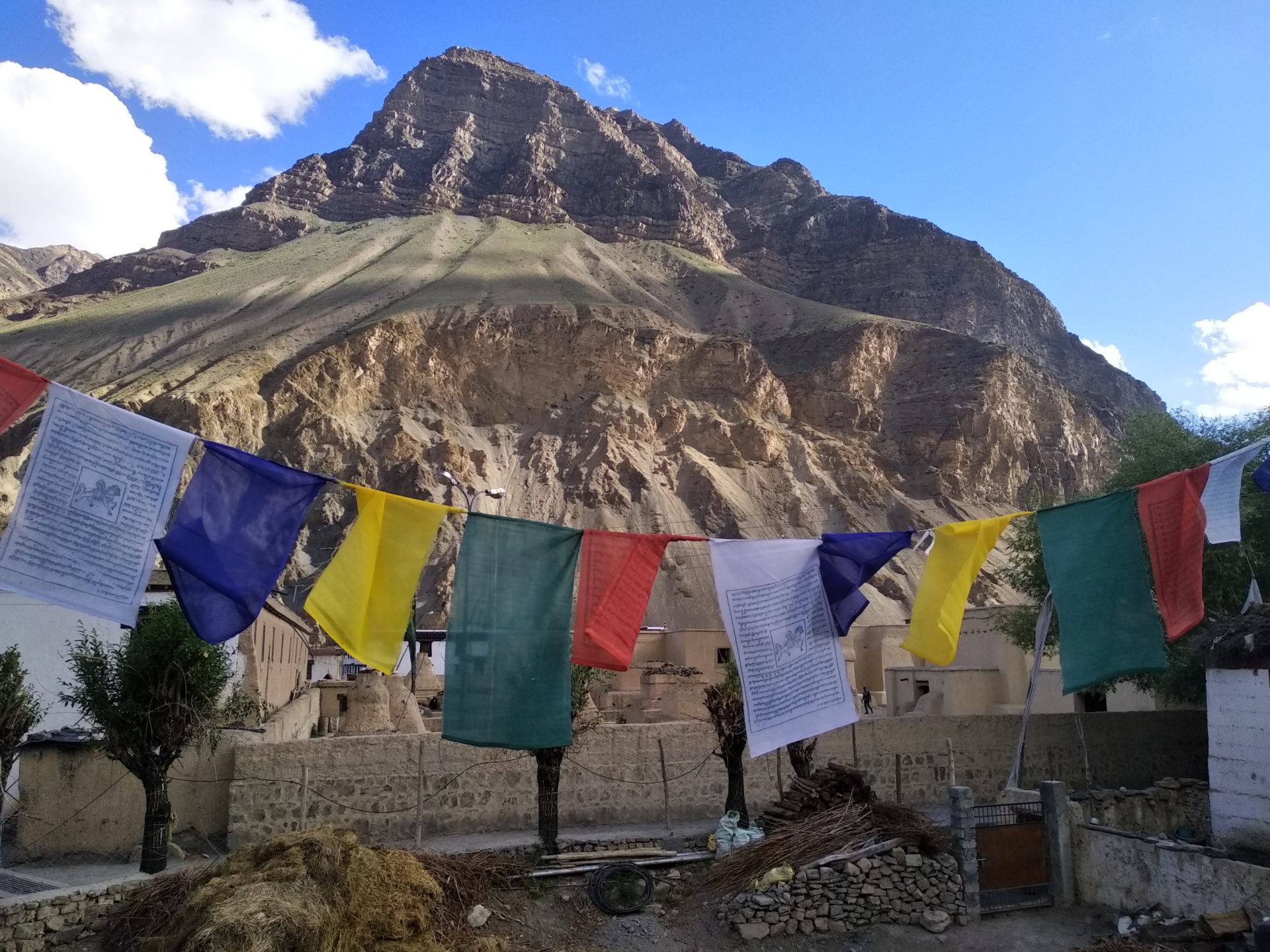
Spiti Valley 
Tabo 
Ki Monastery 
Spiti Valley 
Tabo Monastery 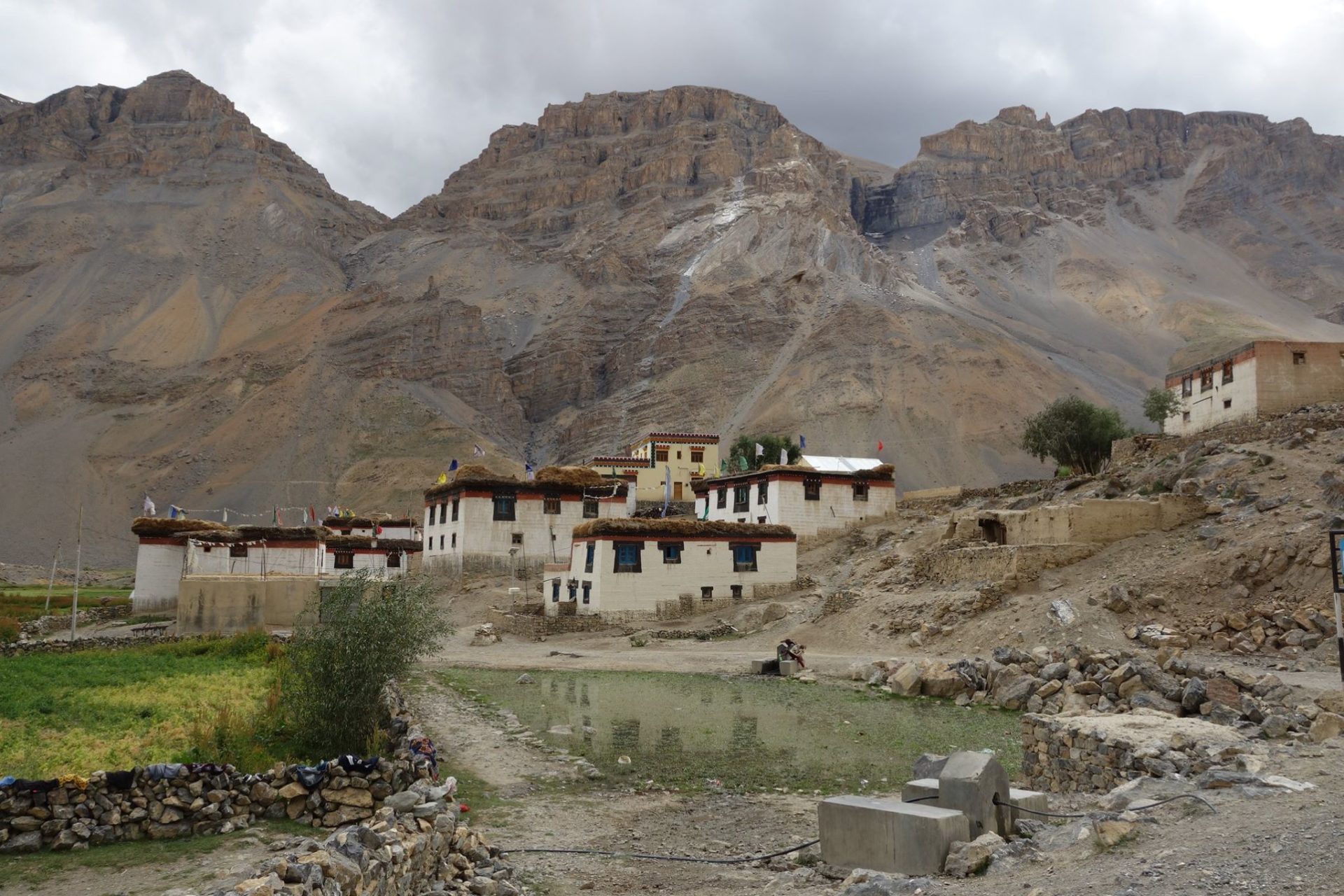
Spiti Village 
Break 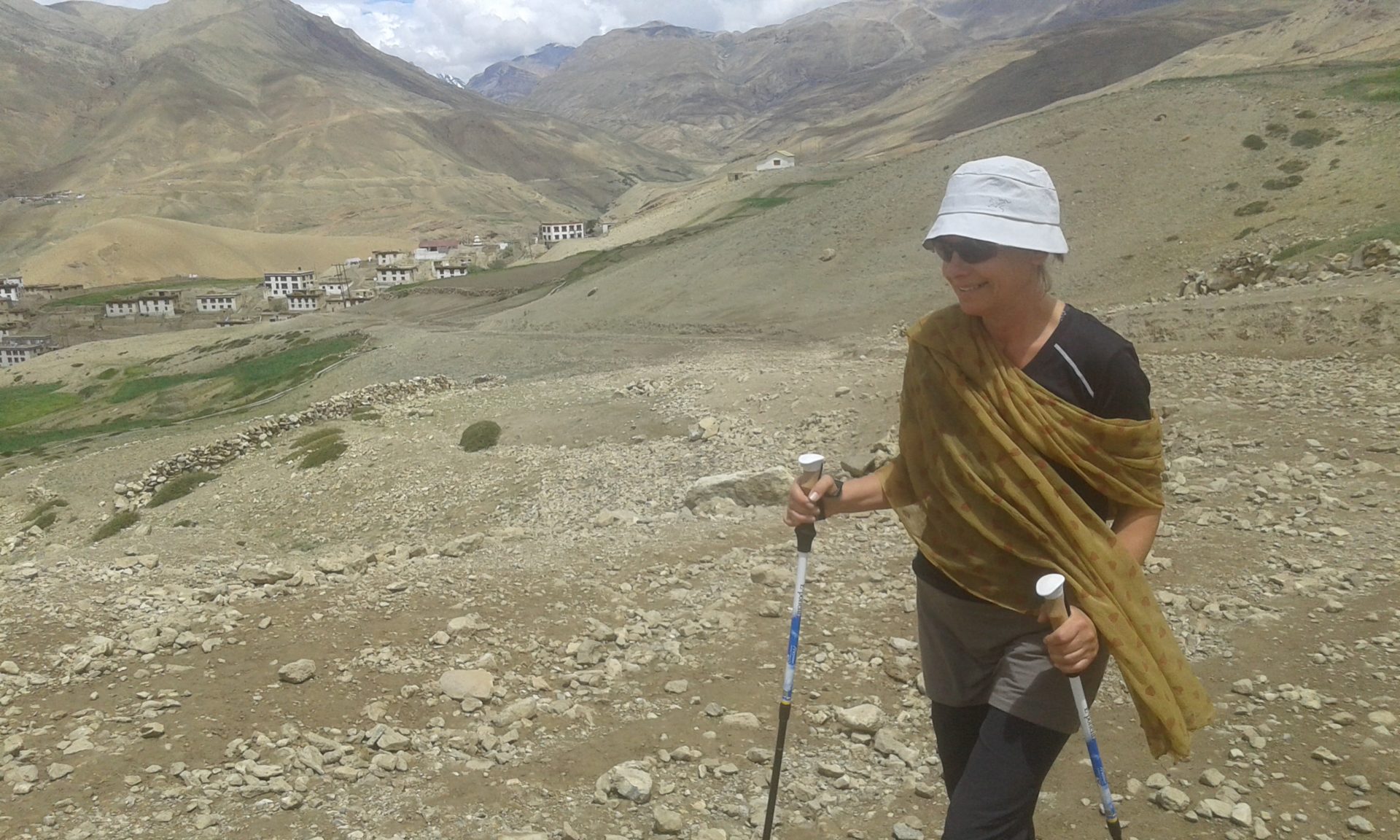
Trekking 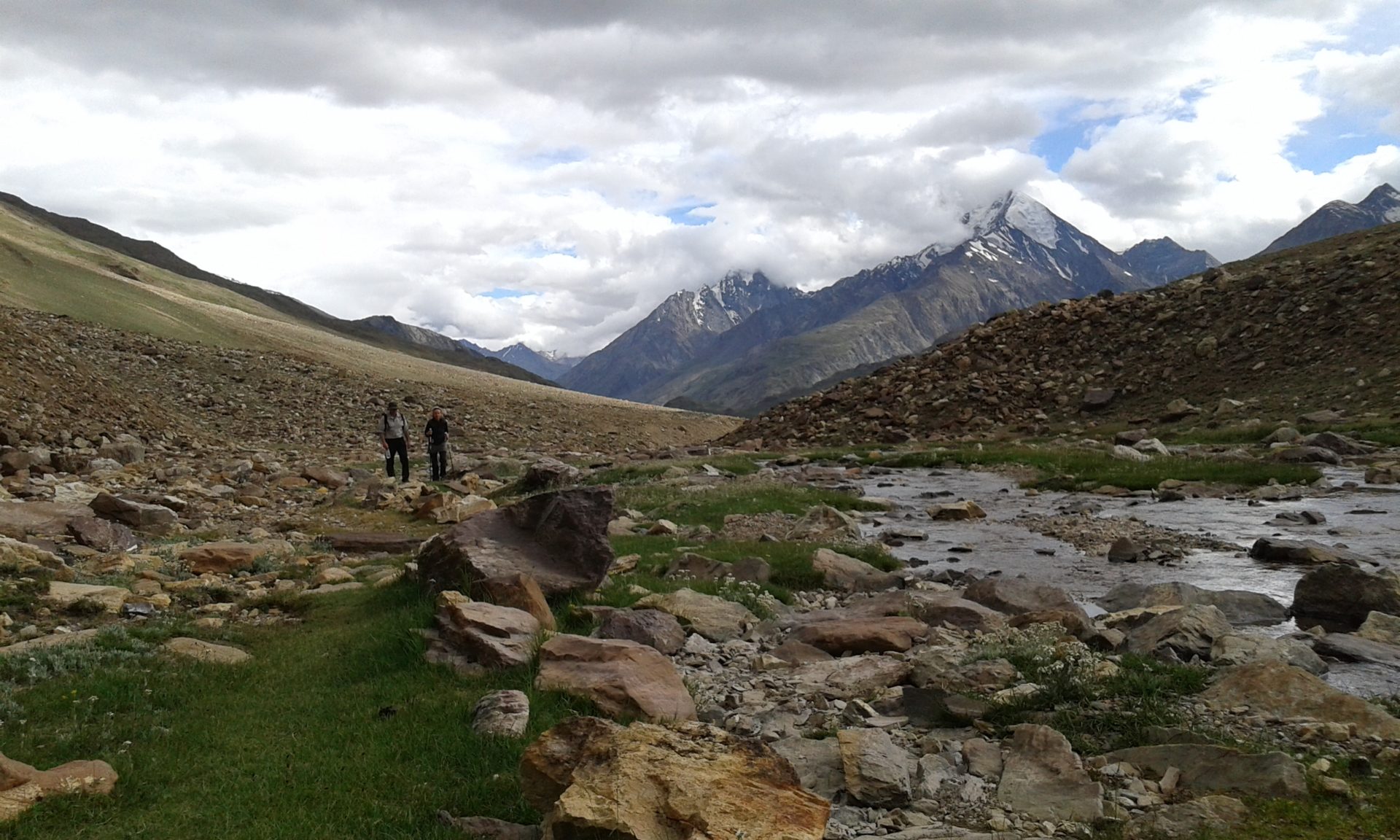
Trekking 
Beauty 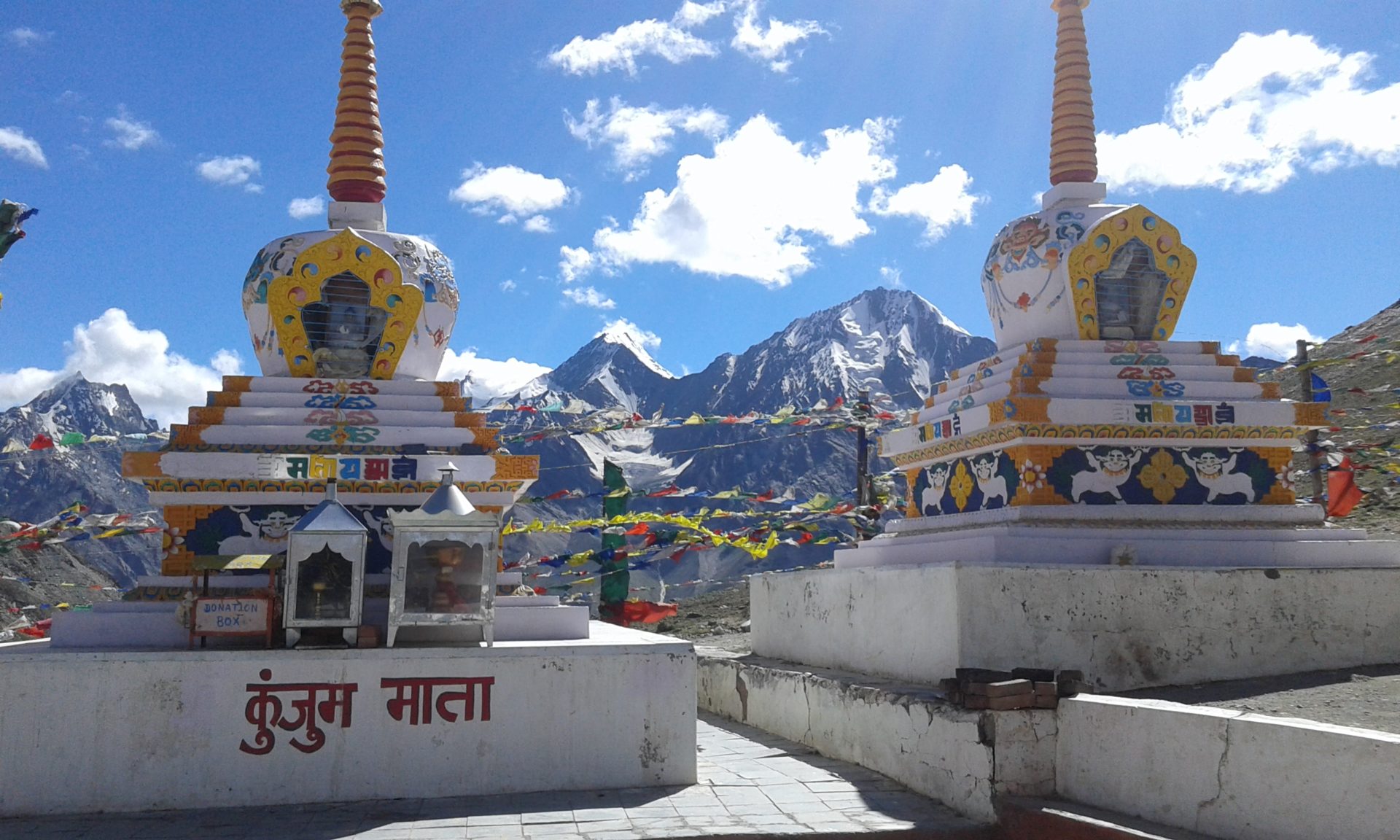
Kunzum Pass 
Chandratal Lake 
Yoga 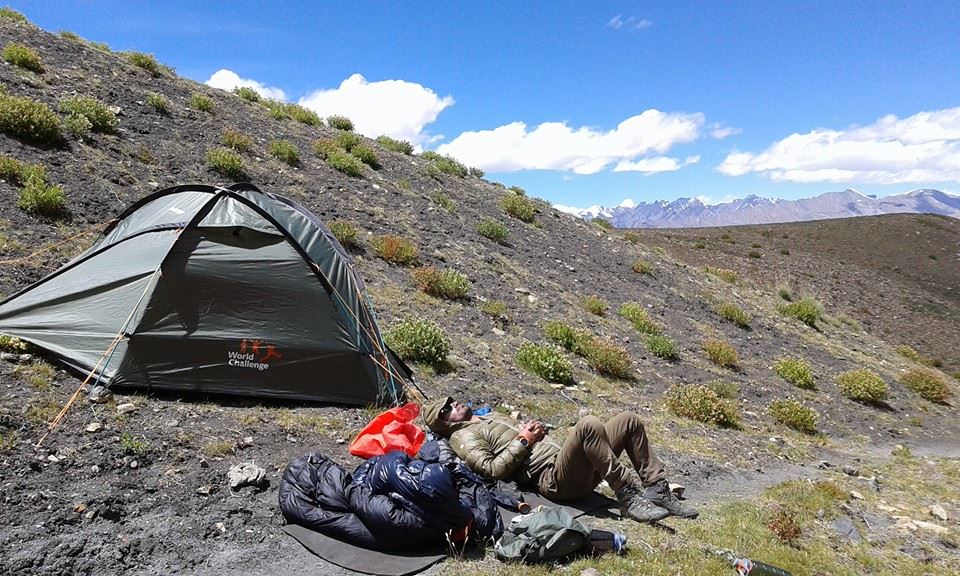
Camp 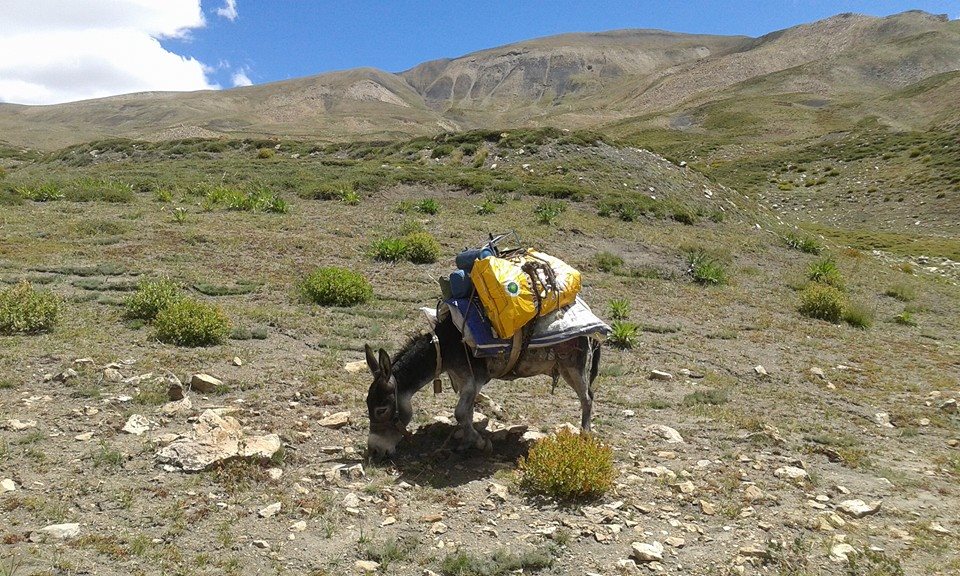
Donkey 
Trek 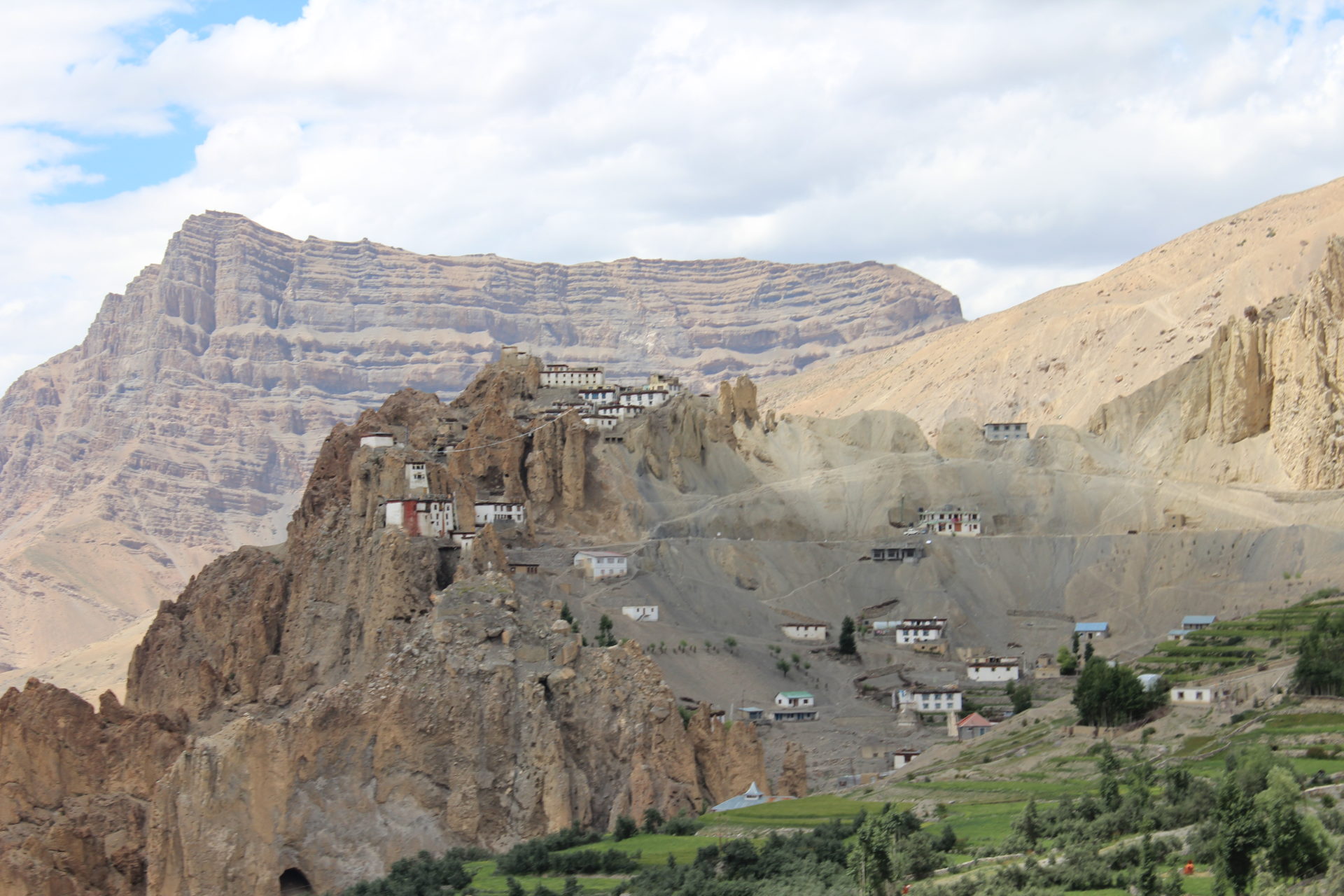
Dhankar Monastery in Spiti 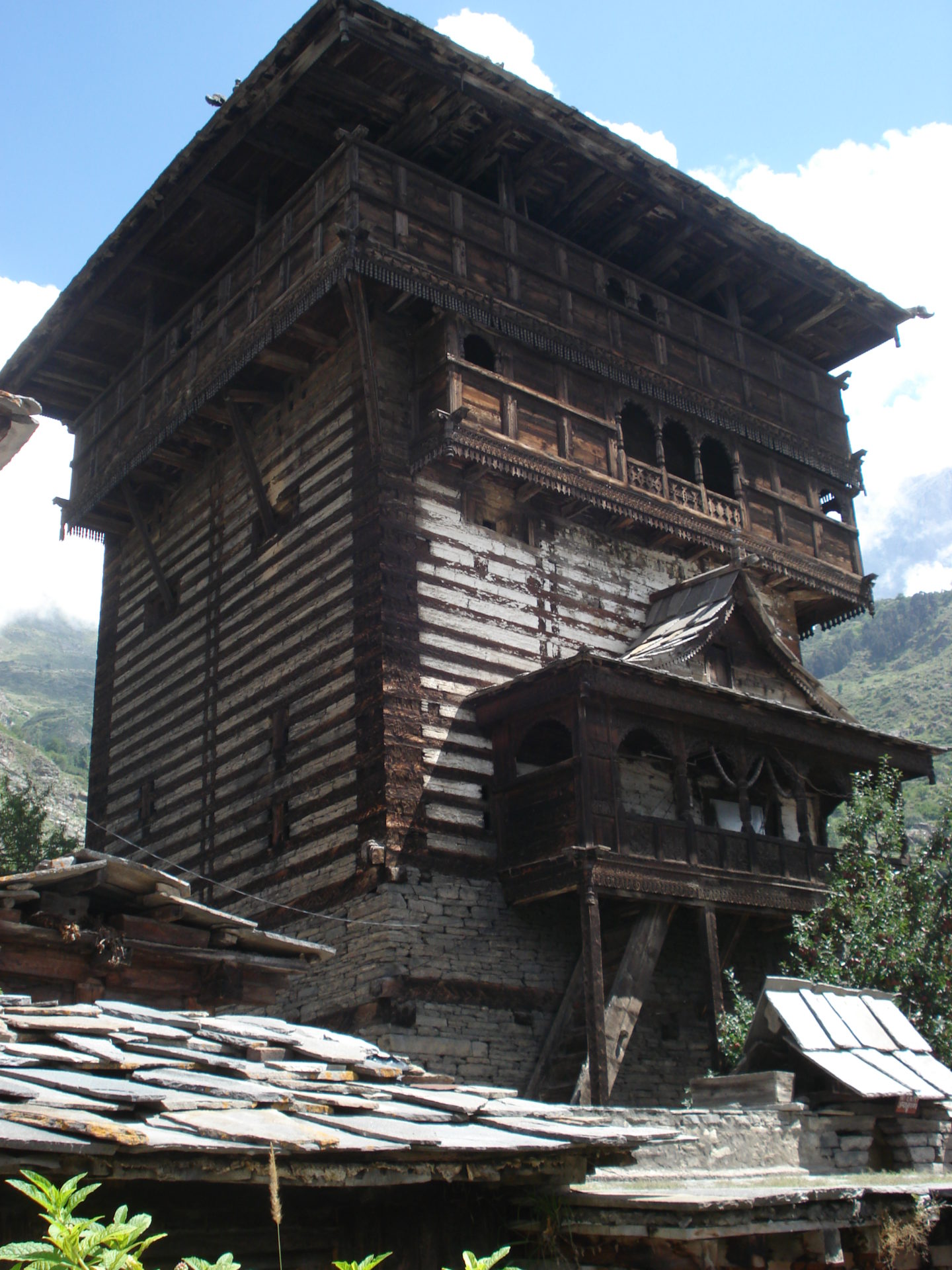
Saharan 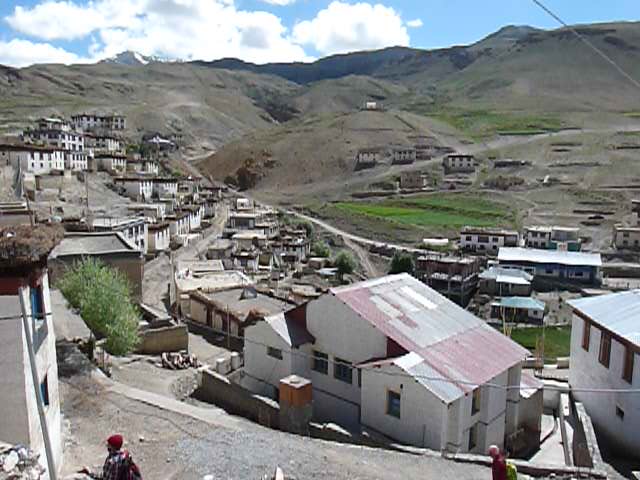
Kibber 4200 m 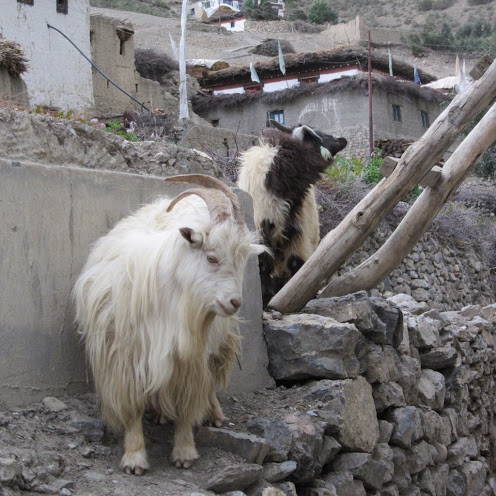
Spiti Village 
Trek 
Trekking in Spiti 
Trek
Prices and Dates
Fixed date:
06.07.-20.07.2024
1900 € per person (4-12 participants) single supplement 350 €
The tour is also possible as a private tour on individual dates. Please contact us.
Tour Info
Requirements
The Bhaba Pass Trek is a moderate trek in itself, but the altitude of 4900 m makes it more challenging. The entire trip is almost exclusively above an altitude of over 3500 meters. If you experience health problems due to the altitude, the trip will be changed accordingly.
Information about the Trekking Tours with Chalo! Travels
Mountain guide and trekking team
On all our treks we have at least one (for larger groups of 6 participants two) trained local mountain guide. Our mountain guides have all completed at least the Indian mountaineering training, many of them have also completed the advanced courses.
They are familiar with the trekking routes and know the terrain excellently. All our mountain guides speak English.
In addition, there is a local team consisting of a cook (if the group consists of only two participants, the mountain guide also takes over the tasks of the cook), helpers, horsemen with horses or Nepalese porters, depending on the type of trek.
All our team members have been working with us for years, are very friendly and always strive to provide our guests with a great trekking experience. Their English (besides of the Guide) is rather mediocre or non-existent, but this is not necessarily a hindrance to communicating with them.
Trekking routes
The trekking routes are designed according the skills of our guests and are all feasible for a person with a good fitness level, unless otherwise mentioned. The daily routes are between five and eight hours long (with breaks) and an average increase of around 500-800 metres of altitude is completed.
In between, rivers may have to be crossed. The paths are partly well developed, but sometimes also almost non-existent. On our trekking routes there are hardly any villages in between, so we will take enough food for the whole tour.
On our treks we cross passes, snow or glaciers. On steep slopes, we have safety equipment with us.
Daily routine (Depending on the length and intensity of the trek, the times may vary)
7: 00 am Get up with Tea
7:30-8:30 am Breakfast
7:00-9:30 am Dismantling of the camp
8:00- 9:30 am Start Trek
1:00 pm Lunch on the way
3:00-5:00 pm Arrival at the camp and camp construction
3:30-5:30 pm Snacks
7:00 pm Dinner
Altitude and altitude sickness
Altitude sickness is a very important topic that should not be underestimated, especially during our trekking tours in the Indian Himalayas. At altitudes above 3500 m, our body has to slowly get used to the low air pressure, which also causes less oxygen to enter our lungs. The first signs of altitude sickness are headaches, which are accompanied by dizziness, nausea, insomnia and loss of appetite. It becomes problematic when water accumulates in the lungs and brain and edema occurs. Then only the immediate descent to lower altitudes will help. To prepare for the heights on our treks, we will either spend a few nights at high altitudes before the trek or slowly ascend during the trek to acclimatize. If we notice that there are problems with our guests (each person is otherwise able to acclimatize, regardless of age, gender and fitness level), it may happen that either the entire group or the concerned participant descends/returns with a team. In addition, it makes sense to take an emergency drug for altitude sickness. For this, it is best to consult the pharmacy or the travel doctor. For certain treks we will also have oxygen with us.
Luggage
Each trekking participant is responsible for his own clothes and personal belongings. Depending on the trek, we are either with horses or porters. If we have load horses, one bag per participant can be loaded onto the horse. In the case of treks with porters, all personal luggage must be carried independently. Tents, sleeping bags, mattresses and food are carried by our porters.
For trekking tours with horses, a day backpack with space for the lunchbox, a water bottle and warm overcoat clothing should be taken with you. Here to the complete packing list for our trekking tours.
Packing list for trekking tours
- sleeping bag at least -10°C
- large backpack or soft carrying bag so that the load animals can carry the luggage
- Small carrying backpack for the day approx. 30-40 l with rain protection
- flashlight/headlamp
- 2 refillable water bottles
- hiking poles
- passport and passport copy
- camera with spare battery and memory card
- headgear as sun protection
- Good Sunglasses
- cap
- Scarf, Buff
- Gloves
- wind-proof trekking pants
- trekking pants
- Functional Underwear Long
- hiking boots
- socks thick and thin
- sneakers, sandals and/or slats
- windbreaker
- Warm Jacket
- fleece sweater/jacket
- Tshirts
- sunscreen, lip balm min. Protection 40
- fat cream
- water purification tablets (boiled and filtered water is provided)
- own medications for headaches, nausea, digestive problems, colds)
- bubble patches and dressing material
- own hygiene articles
- Toilets Paper
- hand disinfection
Meals
During the trek there will be a vegetarian full catering. Water is either boiled or we have a water filter with us.
Breakfast (daily selection):
- Coffee/Tea
- Oatmeal porridge/muesli/cornflakes/Indian porridge
- Indian breakfast
- Sliced fruit/vegetables
Lunch (mostly lunchbox), sometimes warm in the camp
- Sandwiches/Indian (rice, chapati, vegetables)/potatoes
- Juices
- Fruit
Snacks
- Tea/coffee
- Indian snacks
Soup
Dinner
- Vegetable dish
- Lentil dish
- Rice
- Chapati
- Salad
- Dessert
Accommodation and camp
We have very comfortable and spacious two-man tents. Our mattresses are practical but simple if there are problems with sleeping on hard surfaces, please take your own mattress with you or order from us. Our sleeping bags are freshly washed and have a very good quality with comfort zone up to -5°C/extreme zone up to -20° C. It is recommended to bring personal indoor sleeping bags.
In addition, we have a spacious dining tent with tables and chairs, a kitchen tent for the team and a toilet tent. For treks up to 4 people, the kitchen tent can also act as a dining tent at the same time.
For trekking tours with porters, we will take our smaller, lighter tents with us and do without a toilet tent.
Weather
In the Himalayas, temperatures fluctuate widely. While it can get warm up to 25°C during the day and the sun is not only warming, but also very intense (sun protection is a must), it can also cool down significantly below the minus-grade at night, especially in the months end of September and October, as well as in June. There may also be weather changes with snow on the passes.
